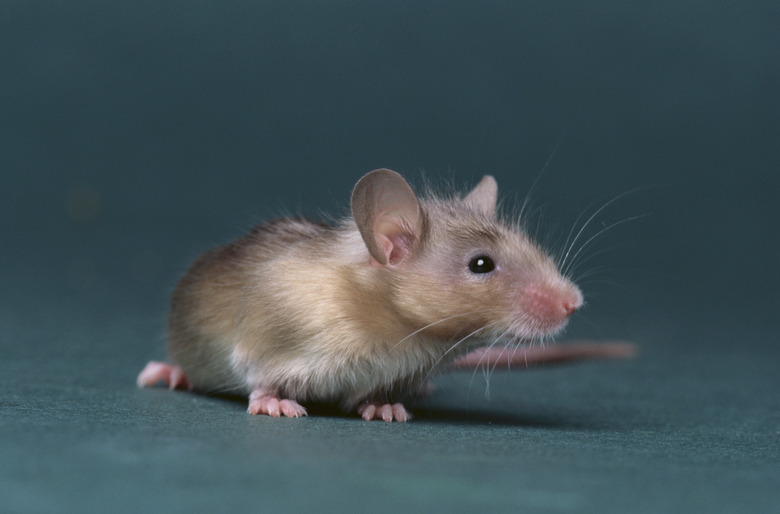The Role Of A Consumer In An Ecosystem
Organisms interact with each other and their environment in ecosystems. The role of consumers in an ecosystem is to obtain energy by feeding on other organisms and sometimes transfer energy to other consumers. Changes that affect consumers can impact other organisms within the ecosystem.
Components of an Ecosystem
Components of an Ecosystem
Ecosystems contain all the living and nonliving parts of an environment. Nonliving, or abiotic, components include:
- light
- water
- soil
- minerals
- oxygen
- carbon dioxide
Plants, animals, protists, fungi and bacterial make up the biotic, or living, parts of ecosystems. Organisms within an ecosystem can be classified into two main categories: those that produce their own food and those that consume other organisms for food.
Producer Definition: Autotrophs
Producer Definition: Autotrophs
The foundation of any ecosystem is the primary source of energy: sunlight. Plants and other photosynthesizing organisms use light energy from the sun – together with water and carbon dioxide – to produce carbohydrates that they use for energy. These organisms are called autotrophs, meaning they make their own food. Autotrophs are producers in an ecosystem because they provide energy for other organisms.
Consumer Definition: Heterotrophs
Consumer
Definition: Heterotrophs
Organisms that cannot make their own food are called heterotrophs, because they obtain food from other organisms rather than themselves. All heterotrophs are consumers and are classified by the type of organisms they eat and their place in the ecosystem.
Primary consumers feed directly on plants and other producers. Secondary consumers feed on primary consumers, and tertiary consumers feed on secondary consumers. Consumer examples include mammals, birds, fish, reptiles, amphibians, insects, fungi and microscopic organisms such as protozoa and some types of bacteria.
Consumer interactions and behaviors are characterized by the relationship between predators and prey. Secondary and tertiary consumers can be predators if they feed on other live consumers. An apex predator is the top consumer in an ecosystem and is not preyed upon by other predators.
The Role of Decomposers
The Role of Decomposers
Decomposers are a type of consumer with a specific role in an ecosystem. They eat dead organisms, both producers and other consumers, and break down the remains. Decomposers process decaying tissues and return nutrients and other necessary molecules to the environment for producers to use. Molds, bacteria, protozoa and earthworms are examples of decomposers.
Food Webs and Food Chains
Food Webs and Food Chains
A food web shows the flow of energy between organisms in an ecosystem. Producers convert light energy into chemical energy in the form of glucose. Some of this energy is transferred to primary consumers when they eat producers.
When a primary consumer becomes prey to a secondary consumer, energy transfers from the prey to the predator. When producers, prey and predators die, a portion of the energy is transferred to decomposers.
The transfer of energy is indicated by an organism's trophic level, or feeding level, within a food web. The linear movement of a series of energy transfers within a food web from one trophic level to another is called a food chain.
Consumers and Trophic Cascades
Consumers and Trophic Cascades
Factors that impact one trophic level can also affect organisms within other trophic levels in a series of events called a trophic cascade. A change in the environment that affects apex predators is called a top-down effect.
If the population of apex predators decreases due to disease or habitat loss, it can cause an increase in the population of prey species that make up the primary and secondary consumers in other trophic levels. An increase in these populations can result in a shortage of producers because there are more organisms feeding on limited resources.
When environmental conditions cause a decrease in the populations of producers, it results in a bottom-up effect. Smaller populations of producers mean less food is available to primary consumers. The effects are felt through all the trophic levels of consumers as there is less energy available at each level.
Cite This Article
MLA
Mentzer, A.P.. "The Role Of A Consumer In An Ecosystem" sciencing.com, https://www.sciencing.com/role-consumer-ecosystem-5770576/. 29 May 2019.
APA
Mentzer, A.P.. (2019, May 29). The Role Of A Consumer In An Ecosystem. sciencing.com. Retrieved from https://www.sciencing.com/role-consumer-ecosystem-5770576/
Chicago
Mentzer, A.P.. The Role Of A Consumer In An Ecosystem last modified August 30, 2022. https://www.sciencing.com/role-consumer-ecosystem-5770576/
